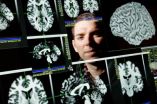(Press-News.org) UNIVERSITY PARK, Pa. -- Forging public and private partnerships that encourage broadband access for people with disabilities may help bridge a technological divide that hinders them from reaching their potential, according to an international team of researchers.
Besides connecting people who have disabilities with resources that may help them become more independent, equipping them with broadband technology can also benefit society and ease the financial burden on taxpayers, said Krishna Jayakar, associate professor of communications, Penn State.
"The benefits of bridging this gap are many and helping people become more independent is just one," Jayakar said. "What is not obvious are the social benefits to the community and the benefits to taxpayers."
Jayakar and colleagues examined national policies on broadband Internet access in five developed and developing countries, including the United States, Australia, South Korea, China and India.
In the United States, only 54 percent of the 16 million households where someone has a disability have a computer, compared to about 80 percent of non-disabled households. Only 43.1 percent of households that include a person with a disability have broadband access, while 72 percent of non-disabled households are subscribed to broadband services.
"The principal reason for non-subscription is that households remain unconvinced about the benefits of broadband, though cost and lack of suitable equipment are also important," the researchers said.
Building nationwide programs to connect people who have disabilities with broadband equipment should be looked at as an investment, since it can save money by helping to ease the strain on social infrastructure, according to Jayakar, who worked with Gary Madden, professor of economics, Curtin University; Chun Liu, associate professor of economics and management, Southwest Jiaotong University; and Eun-A Park, assistant professor of communication, film and media studies, University of New Haven. Empowering people with disabilities to use the internet gives them the opportunity to monitor their own health and find information, instead of relying on social services.
The Americans with Disabilities Act of 1990 is one example of how governments can meet the needs of their citizens with disabilities, Jayakar said. However, the legislation does not include provisions for broadband access.
The researchers, who report their findings at the annual convention of the Pacific Telecommunications Council today (Jan. 22), said government programs that mandate broadband access for people with disabilities are only one option and might not necessarily be the preferred option. They found that the most successful programs tended to unite public and private sources.
"One possibility is a public-private or purely commercial partnership where governments can work with businesses," said Jayakar.
According to the researchers, introducing new customers to broadband technology can help expand markets for businesses.
"There is a marketing advantage in adding accessibility features to products in the mainstream market, which can make them more attractive to the general consumer, even as they help people with disabilities, which can help them more fully participate as both citizens and consumers," Jayakar said.
While businesses can play a role, governments usually have the resources to coordinate a range of grassroots efforts that are spread across the country.
"South Korea, for example, organizes community programs aimed at increasing technology literacy for older people," said Jayakar. "The country has been very effective at coordinating this digital literacy program on a national level."
The program offers lessons to older citizens to learn how to operate computers and troubleshoot problems. For example, the instructors teach the participants what to do if their computers crash and how to protect their machines from computer viruses and other forms of malware.
While local libraries and other community groups host the computer literacy courses, the government helps to coordinate the effort across the country.
INFORMATION:
The Pacific Telecommunications Council and the Time Warner Cable Research Program on Digital Communications supported this work.
**mls**
Databriefing: How long can we expect to live?
An article from John Appleby, Chief Economist at the Kings Fund, published on bmj.com today brings attention to the rising amount of those expected to live to 100 and asks where it will end.
According to the Office of National Statistics there seems to be "no end in sight" as far as the number of UK citizens reaching 100 years old is concerned. Approximately 13% of girls born in 1951 are expected to reach this milestone, increasing to 40% for girls born this year and a predicted 60% of those born in 2060.
Appleby attributes ...
CHAMPAIGN, Ill. — A new study of 152 Vietnam veterans with combat-related brain injuries offers the first detailed map of the brain regions that contribute to emotional intelligence – the ability to process emotional information and navigate the social world.
The study found significant overlap between general intelligence and emotional intelligence, both in terms of behavior and in the brain. Higher scores on general intelligence tests corresponded significantly with higher performance on measures of emotional intelligence, and many of the same brain regions were found ...
This press release is available in German.Trees do not grow in the deep sea, nevertheless sunken pieces of wood can develop into oases for deep-sea life - at least temporarily until the wood is fully degraded. A team of Max Planck researchers from Germany now showed how sunken wood can develop into attractive habitats for a variety of microorganisms and invertebrates. By using underwater robot technology, they confirmed their hypothesis that animals from hot and cold seeps would be attracted to the wood due to the activity of bacteria, which produce hydrogen sulfide during ...
ST. LOUIS -- In research published in the Jan. 21 issue of The Journal of Cell Biology, a team led by Susana Gonzalo, Ph.D., assistant professor of biochemistry and molecular biology at Saint Louis University, has discovered a molecular pathway that contributes to triple-negative breast cancer, an often deadly and treatment resistant form of cancer that tends to strike younger women. In addition, Gonzalo and her team identified vitamin D and some protease inhibitors as possible new therapies and discovered a set of three biomarkers that can help to identify patients who ...
Public campaigns that call upon people to think and act interdependently may undermine motivation for many Americans, according to new research published in Psychological Science, a journal of the Association for Psychological Science.
Americans are repeatedly exposed to messages urging them to think and act with others in mind, telling us, for example, to act sustainably by bringing reusable bags to the grocery store or to act responsibly by getting a flu shot. Researchers MarYam Hamedani, Hazel Rose Markus, and Alyssa Fu of Stanford University wondered what impact these ...
As world food and energy demands grow, nations and some corporations increasingly are looking to acquire quality agricultural land for food production. Some nations are gaining land by buying up property – and accompanying water resources – in other, generally less wealthy countries.
Sometimes called "land grabbing," this practice can put strains on land and water resources in impoverished countries where the land, and needed water, has been "grabbed" for commercial-scale agriculture.
A new study by the University of Virginia and the Polytechnic University of Milan, ...
WASHINGTON, January 22, 2012—Plants can adapt to extreme shifts in water availability, such as drought and flooding, but their ability to withstand these extreme patterns will be tested by future climate change, according to a study by U.S. Department of Agriculture (USDA) scientists and their cooperators.
The study was published this week in Nature by a team of Agricultural Research Service (ARS) scientists led by Guillermo Ponce Campos and Susan Moran and an Australian team led by Alfredo Huete from the University of Technology, Sydney (UTS). This research included ...
BUFFALO, N.Y. — Super-small particles of silicon react with water to produce hydrogen almost instantaneously, according to University at Buffalo researchers.
In a series of experiments, the scientists created spherical silicon particles about 10 nanometers in diameter. When combined with water, these particles reacted to form silicic acid (a nontoxic byproduct) and hydrogen — a potential source of energy for fuel cells.
The reaction didn't require any light, heat or electricity, and also created hydrogen about 150 times faster than similar reactions using silicon particles ...
Bad news about the economy could cause you to pack on the pounds, according to a new study published in Psychological Science, a journal of the Association for Psychological Science.
The study shows that when there is a perception of tough times, people tend to seek higher-calorie foods that will keep them satisfied longer. When subconsciously primed with such messages, a "live for today" impulse is triggered causing people to consume nearly 40 percent more food than when compared to a control group primed with neutral words.
"The findings of this study come at a time ...
BOSTON—Large-scale genomic sequencing has revealed two DNA mutations that appear to drive about 15 percent of brain tumors known as meningiomas, a finding that could lead to the first effective drug treatments for the tumors, report scientists from Dana-Farber Cancer Institute and the Broad Institute.
Surgery and radiation currently are the only treatments for meningiomas – slow-growing, often benign tumors that develop in the membranes surrounding the brain. Meningiomas can grow dangerously large, however, causing seizures and limb weakness, and occasionally are fatal. ...


